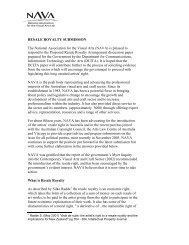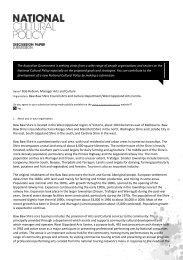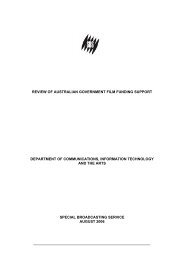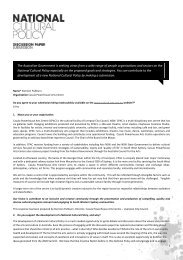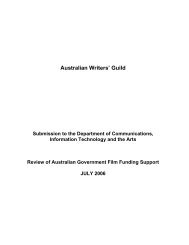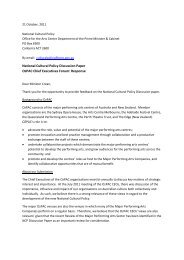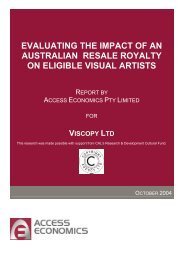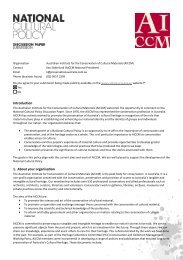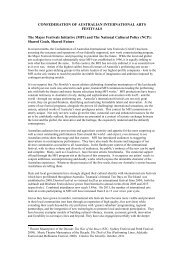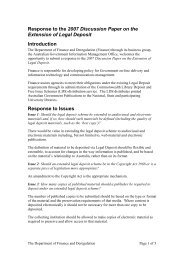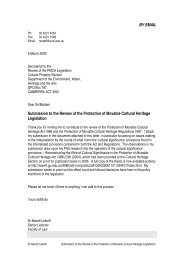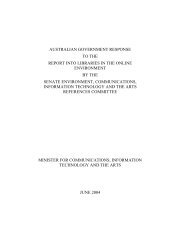Discussion paper (PDF - 459 KB)
Discussion paper (PDF - 459 KB)
Discussion paper (PDF - 459 KB)
Create successful ePaper yourself
Turn your PDF publications into a flip-book with our unique Google optimized e-Paper software.
Immunity from Seizure for Cultural Objects on Loan - <strong>Discussion</strong> Paper 2011Introduction<strong>Discussion</strong> <strong>paper</strong>Currently Australia does not have comprehensive immunity from seizure legislation in place whichprotects objects from seizure whilst on loan to collecting institutions. The Commonwealth, with thecooperation of the states and territories, is currently investigating this issue to gain a wider perspectiveon the impact a lack of this type of legislation is having, or is likely to have, in the Australian context.The purpose of this discussion <strong>paper</strong> is to encourage submissions which will inform any future policyconsideration of this issue.For the purposes of this discussion <strong>paper</strong> a series of policy questions have been developed, followedby a separate hypothetical model which outlines one possibility for the operation of immunity fromseizure in Australia. These should be viewed separately for the purpose of making any submission onthe matter and are not intended to propose a plan for implementation by the Australian Governmentbut rather generate input during this consultation period which can be used to inform future directionon the issue.Immunity from seizure for cultural objects on loanImmunity from seizure for cultural objects on loan (hereafter ‘immunity from seizure’) broadly meansproviding protection against potential claims on cultural heritage objects lent by an international ordomestic collection to cultural agencies, including, but not limited to, museums, galleries, libraries andarchives (hereafter ‘collecting institutions’), for the duration of the loan. It is essentially a guaranteethat objects on temporary loan from another country will be protected against seizure, and, in somecases, suit (defined as any legal proceedings brought to a court of law), during the period of the loan.Benefits of immunity from seizure when implemented in other countries have included:• reducing the risk involved in cross–border loans for collecting institutions;• providing surety for the lender and allowing mobility of collections between collectinginstitutions for the publicly beneficial exhibition of significant objects;• allowing lending procedures to become streamlined and more transparent;• improving the due diligence of borrowing institutions which are required to meet particularstandards in order to gain access to immunity provisions.There are three main scenarios in which the seizure of objects on loan becomes a risk:1. A government, company or individual lays claim to the ownership of an object, and bringslegal proceedings to have their ownership recognised and/or to take possession of theobject.2. Where the object or objects are seized as part of the enforcement of a judgment againstthe owner (where the owner is in debt, or as part of divorce proceedings for example).These types of claims can be unrelated to title or provenance, with the object being treatedsimply as property of some value.3. Where the object or objects are seized as part of a criminal investigation (includingproceeds of crime, etc).4




